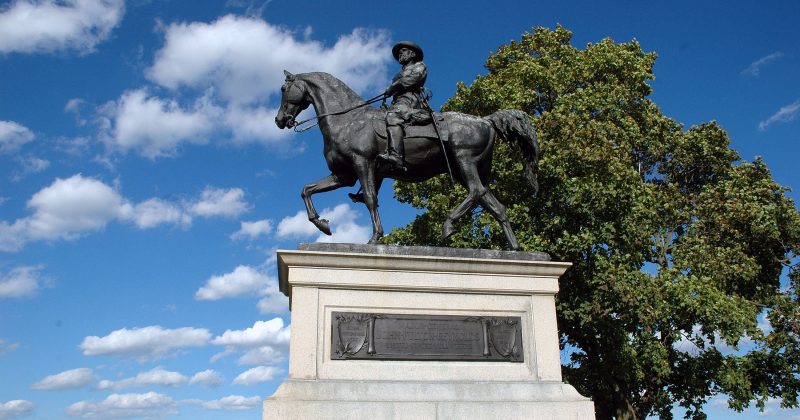Some of the soldiers who fought at Gettysburg spent time at Carlisle Barracks, which would later become the US Army War College founded by President Theodore Roosevelt’s Secretary of War, Elihu Root.
“Not to promote war, but to preserve peace through intelligent and adequate preparation … this institution is founded,” Root said.
The Carlisle Indian School was located on the grounds. Its most famous alumnus, Jim Thorpe, would become an Olympic legend.
“Jeb” Stuart led a cavalry regiment for Robert E. Lee to occupy Carlisle Barracks. He had once been stationed there before the war. Tours of Gettysburg give the details of Stuart and other officers from both sides of the war.
Both sides took heavy losses, but the south particularly so. Many of the southern casualties came from Pickett’s Charge. Thinking that the Union cannon had been eliminated, he led a charge straight into the line of fire of those Union cannon.
A notable regiment from the north was the 20th Maine Infantry, led by Joshua Chamberlain. Chamberlain was a school teacher at Bowdoin College before joining the Army. He is still remembered for his courage at Little Roundtop. He went on to become Bowdoin’s president and he made Major General by the end of the war.
The US Park Service has recently been acquiring more land in the battlefield. They’ve trimmed trees to restore sight lines that would have existed during the war.
Pickett still has a restaurant named for him here – Pickett’s Buffet. The hotel that surrounded General Lee’s battle headquarters has been torn down but is being restored. It’s recommended that you visit in the spring or fall as temperatures and crowds are lower. Guided tours are available. The battlefields are free of charge to visit.
